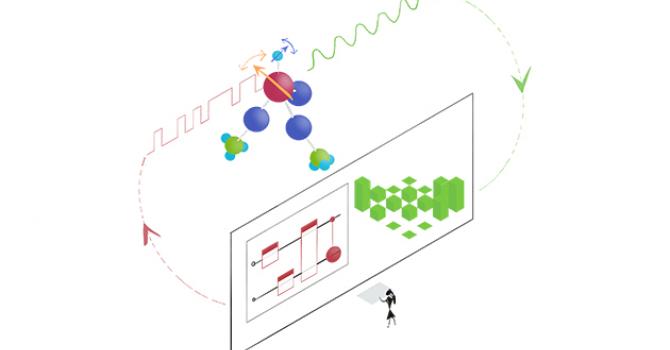I Prefer My Own “Shack” Over The King’s Bed
Dr. Melody Leung, Division of Life Science, explains the specific effects of smell on people.
By Dr. Melody Leung, Division of Life Science, HKUST
Humans are animals relying heavily on vision, judging many things with their eyes – e.g., whether a food is attractive, or whether a stranger is friendly. Besides our eyes, our sense of smell is also very important. We all perhaps have the experience of eating with a stuffy nose and not knowing what it tastes like, or using our nose to check whether a food has gone bad. A person giving off a bad smell makes people keep their distance, and some special odors (such as that of gas) enable us to detect danger.
People often say: “The emperor’s bed is no better than my own doghouse.” What makes one’s own doghouse more attractive? Besides being an environment familiar to the eyes, its smell is also one of the factors. One’s own smell, or a mixture of one’s own smell and those of one’s family and pets, makes for a unique, reassuring “doghouse” smell.
To understand the specific effects of smell on people, researchers at the University of British Columbia, Canada, invited 96 pairs of males and females in relationships for a study in 2018. Each male subject was asked to wear a T-shirt for 24 hours without using any scented product and then give it to the researchers in a sealed plastic bag. Each female subject was randomly assigned to sniff one of the T-shirts and then given a mock interview designed to make her nervous, during which the female subject’s saliva was collected to analyze the levels of stress hormones in it.
The study found that female subjects who sniffed their partner’s T-shirts and correctly recognized the smells, compared with those who sniffed a stranger’s or smell-less T-shirt, behaved more relaxed, and the stress hormones in their saliva maintained at a lower level. Even those who sniffed their partners’ T-shirt but failed to recognize their smells found the smells somewhat stress-relieving. This experiment proves that smells given off naturally by human bodies consciously or unconsciously influence our physical and emotional responses.
Besides its effects on couples, body odor can also enhance the bond between mother and baby. In 2013, using brain scanning technology, the University of Pennsylvania observed that, when mothers having just given birth sniffed the smell of a newborn baby, the reward mechanism in their brains kicked in just as quickly even if the smell was not from their own baby. In contrast, even though females of similar age but having never given birth found the smells of babies pleasing, their brain didn’t have such reward response. In addition, a 1998 University of Oklahoma study also found that crying newborn babies who sniffed their mothers’ smells calmed down more quickly than those who didn’t.
We have about 400 types of olfactory receptors, each receiving a specific type of particles, and a smell is a mixture of a variety of particles. In 2014, researchers at the Rockefeller University, New York, identified 128 odor particles for a study, making mixtures using 10-30 of them as ingredients. They found that most subjects could tell two mixtures apart as long as their compositions were more than 50% different, and that the greater the difference, the easier it was to tell them apart. According to statistical calculation, there are as many as one trillion possible mixtures with more than 50% difference in composition! Scientists believe this is the limit of humans’ sense of smell.
Most interestingly, the nasal cavity is not the only place where olfactory receptors can be found; they can also be found in the heart muscles, liver, immune system, skin, and even sperms. Although we still do not fully understand the functions of these olfactory receptors outside of the nasal cavity, judging from the property that receptors receive and respond to particles, it is believed that olfactory receptors outside of the nasal cavity are related to human bodies’ meticulous regulatory mechanisms. We look forward to more discoveries.






